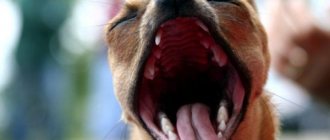Diseases and recommendations for Chihuahuas - there are many legends about this amazing breed. One of them even calls Chihuahuas cosmic messengers. The reason for this is the non-overgrown fontanel on the skull of these dogs: through it, supposedly, an energetic connection with the cosmos occurs. Who are they and where are they from?
History of the breed
It is known that for the first time baby Chihuahua dogs were found in the Mexican province of Chiwawa (the British pronounce it as “Chihuahua” - hence the name of this breed). The first club for their breeding appeared in the USA, and this was in 1923. This breed gained popularity in Europe, but in Russia they became acquainted with it only in the mid-twentieth century. Today, the number of her fans is rapidly growing along with the Huskies. The Chihuahua breed is among the top twenty in popularity.
Chihuahua health
As for the health of these miniature dogs, they can rightfully be called genetically strong. With good care, Chihuahuas almost never get sick and, unlike most large breeds, live to old age without age-related diseases. However, Chihuahuas also have weaknesses. First of all, they are often susceptible to allergies, and this can happen to anything: food, detergents, household perfumes, and so on. Allergies manifest themselves in the form of itching and skin rashes. After identifying the allergen and proper treatment, these symptoms quickly go away. Another common disease in Chihuahua dogs is indigestion. Most often, it is the owners themselves who are to blame for it, who periodically feed the pet food from their table. In addition, the cause of gastrointestinal disorders in dogs can be fatty or low-quality foods, poor absorption of milk, and picking up some scraps on the street. Digestive problems are indicated by bad breath, the dog’s repeated refusal to eat, vomiting, and loose stools.
Poor oral care can cause your Chihuahua dog to develop tartar. First, a yellowish plaque forms at the roots of the teeth, and then it thickens and darkens. All this can lead to gum inflammation and even tooth loss. Since tartar is formed from food debris, you need to regularly brush your pet’s teeth - for this, stores have a large selection of special brushes, pastes, bones, and so on.
Since Chihuahuas are very small dogs, they are quite difficult to tolerate helminthiasis (infection with intestinal parasites). This also needs to be monitored. Dogs become infected mainly from other dogs with whom they walk, through rainwater (they should not be allowed to drink from a puddle) or raw meat. Ticks are also very dangerous for these dogs. They can be carriers of piroplasmosis, a serious disease that often leads the animal to gobelly. Timely treatment of the dog against all kinds of parasites is necessary.
Major diseases
In addition to diseases that occur in representatives of any breed, Chihuahuas, due to their anatomical features, are prone to a number of breed pathologies.
Most often, representatives of this breed are diagnosed with:
- ophthalmological diseases;
- dental diseases;
- allergies;
- epilepsy;
- gastrointestinal disorder;
- pathologies of the respiratory system;
- skin diseases;
- colds and infectious diseases;
- parasitic infestations.
There are also frequent cases of hydrocephalus, hypoglycemia, cryptorchidism, rheumatism, diseases of the musculoskeletal and cardiovascular systems.
Despite their fairly good health, Chihuahuas are still not immune from disease.
This breed has a tendency to diseases of the teeth and eyes, so it is worth paying close attention to them.
Read how to care for your Chihuahua's teeth here.
Unfortunately, a number of diseases arise due to the fault of the owners as a result of improper care of the pet, in particular, poor nutrition.
Chihuahua care
You should examine your Chihuahua's eyes, ears, and nose daily. They must be clean, without discharge. They are wiped with ordinary boiled water using cotton swabs. There are also special lotions. An important issue is pet vaccination. It is carried out from puppyhood and should be regular (for an adult dog - once a year). Vaccinations should be done exclusively in veterinary clinics, under the supervision of a specialist. It would be a good idea to deworm the dog 10 days before vaccination. You need to take this fragile creature in your arms carefully, with two hands: one under the chest, and the other under the seat. Grabbing them by the paws or by the scruff of the neck is unacceptable! It’s good if the Chihuahua has its own place in the house - for example, a comfortable bag or basket.
In general, the main thing in caring for these babies is to love and take care of them. Then the joy of communicating with them will be inversely proportional to the size of this wonderful dog!
The Chihuahua is the smallest dog breed in the world. And this is the only breed of decorative dogs that are small by nature, and not through the generation of larger breeds. Despite their small size, Chihuahuas are full of energy and emotion. Chihuahuas come in long-haired and short-haired varieties.
In Canada and the UK, longhaired and shorthaired Chihuahuas are considered two different breeds. Despite my size, I can communicate well with larger dogs. In addition, they are excellent protectors of their family, so they can make good watchdogs.
In general, the breed is genetically healthy. Health problems in Chihuahuas are common among small dog breeds, such as hypoglycemia, luxating patellas, tracheal collapse, and dental problems. In addition, they are susceptible to hydrocephalus.
Chihuahuas have relatively few health problems. These dogs are long-lived, often living up to 16 years or more. One of the typical problems for Chihuahuas is obesity. Due to their small size, they do not need much food, but owners tend to overfeed them. If you have a Chihuahua, know that it is important to keep his weight under control to maintain good health.
Some of the most common Chihuahua diseases
Diseases and recommendations for Chihuahuas - Hypoglycemia
Diseases and recommendations for Chihuahuas - Patella luxation
Diseases and recommendations for Chihuahuas - Tracheal collapse
— Problems with teeth
Diseases and recommendations for Chihuahuas - Hydrocephalus
Eyes
The most common cases are progressive retinal atrophy, keratoconjunctivitis (dry eyes), glaucoma, and cataracts. Swelling, lacrimation, purulent discharge, redness, inflammation are signs of such diseases. Another possibility is loss of eyeballs due to the structure of the skull. This is possible in small puppies due to injury. In such a situation, urgent veterinary attention is needed.
Retinal atrophy in dogs
To prevent eye diseases, you should regularly examine and wipe with a cotton swab dipped in tea infusion or saline solution.
Keratoconjunctivitis
With this disease, the cornea of the eye becomes inflamed and interferes with the production of tears. As a result, the eye dries out. The result can be decreased vision and even blindness. The causes of the disease can be different - heredity, injury, infection, problems with the immune system, consequences of unsuccessful treatment of other diseases.
Keratoconjunctivitis
Symptoms:
- dull, reddened eyes;
- discharge from the eyes;
- irritation.
If your dog blinks frequently, rubs its eyes with its paw, or has difficulty opening its eyes after sleep, you should immediately consult a doctor. In advanced cases, surgery may even be necessary. In milder cases, the veterinarian will prescribe drops to moisturize the eyes and stimulate the production of natural tears.
Diseases – Hypoglycemia
Hypoglycemia is a condition characterized by a decrease in the concentration of glucose (sugar) in the blood below normal. Hypoglycemia is one of the most common health problems for Chihuahuas. Dogs with extremely low blood glucose levels typically have the following symptoms:
- Lethargy and weakness
— Confusion and disorientation
- Restlessness and agitation
— Impaired muscle coordination
- Nervousness and trembling
— Epileptic seizures
In some cases, the Chihuahua loses its mind and sometimes dies. The severity of symptoms depends on your blood glucose level and how quickly it drops. If left untreated, a dog with even mild symptoms of hypoglycemia can quickly deteriorate. To avoid permanent brain damage, immediate veterinary attention is necessary. However, before you contact your veterinarian, there are a few things you can do to prevent the condition from getting worse.
The first is to restore the blood glucose level to normal levels, for example by giving the dog something to eat that contains sugar, such as syrup, honey or jam. If your Chihuahua is having a seizure or is in a coma, gently rub a small amount of syrup onto the inside of the cheeks, gums and tongue. Also insulate your dog because... Low blood sugar causes hypothermia. Diseases and recommendations for Shar Pei
Chihuahua gets sick: what to do
At the first sign of illness, do not panic. It is necessary to provide the pet with peace by isolating it in a separate room. Remove sources of noise and curtain the windows so that bright light does not irritate or interfere with sleep. Provide the animal with a comfortable temperature and absence of drafts in the room. If the dog refuses to eat, you should not insist on feeding, but you need to monitor the amount of water he drinks. Walking time is reduced, and if necessary, sneezes are left at home. If his condition worsens, you should seek help from a veterinary clinic, where a doctor will evaluate the symptoms and prescribe treatment.
Patella luxation
Patella luxation is an inherited condition in which a Chihuahua's kneecap pops out of the femoral groove. Sometimes the kneecap returns to its place on its own; in other cases, this requires the help of a veterinarian. If the situation is not corrected surgically, it usually leads to osteoarthritis. In 75% to 80% of Chihuahuas, luxating patella is an inherited condition that causes the kneecap to pop out. Although Chihuahuas often have knee problems, they are not prone to hip malformation and hip dysplasia.
To prevent this condition in Chihuahuas at an early age, WOLMAR WINSOME® PRO BIO BOOSTER Ca MINI in combination with WOLMAR WINSOME® PRO BIO GA-GLICAN is needed.
How do you know if your dog is sick?
Symptoms that indicate that a Chihuahua is feeling unwell or is sick are divided into behavioral and physiological. The first include lethargy, apathy, aggression, drowsiness of the dog, loss of appetite, refusal to play and walk. These signs do not provide a clear picture for making a diagnosis, so physiological changes are taken as a basis:
- increased temperature – characteristic of inflammation, poisoning, helminthiasis;
- decrease – enteritis, oncology;
- vomiting, diarrhea, constipation - problems with the gastrointestinal tract, pancreas;
- discharge from the nose, ears and eyes – allergies, ear mites;
- change in color of mucous membranes – liver disease;
- peeling of the skin – scabies, dermatitis;
- wheezing – damage to the respiratory system;
- hair loss – vitamin deficiency, allergies, hyperthyroidism, worm infection.
If a Chihuahua doesn’t feel well or behaves differently than usual, this is not necessarily a disease. It is necessary to monitor the dog and if the condition worsens, seek help from a veterinarian.
Tracheal collapse
Tracheal collapse is a narrowing of the tracheal lumen due to softening of the cartilage rings that form and support the trachea. This condition is typical for Chihuahuas. Symptoms include: dry paroxysmal cough, harsh breathing and gagging. The cough worsens with exercise, high temperature, excitement and humidity. Obese Chihuahuas are especially susceptible to this disease. Treatment is aimed at stopping the cough and strengthening the cartilage rings using supplements.
WOLMAR WINSOME® PRO BIO L-COLLAGEN especially helps Chihuahuas maintain a healthy airway. To protect your Chihuahua's throat and avoid pressure in the airways, use a harness instead of a collar.
Seizure attacks
Uncontrollable seizures, accompanied by loss of consciousness and of a regular nature, are caused by epilepsy.
This pathology occurs as a result of a malfunction of the Chihuahua's brain and can be either hereditary or acquired.
The first attacks appear between the ages of 10 months and 3 years, and their number and frequency increase over time..
Signs of an approaching attack include sudden nervousness of the pet, timidity and a desire to hide.
The seizure itself, lasting no more than 1.5 minutes, is accompanied by:
- body confinement;
- drooling;
- involuntary urination and defecation;
- howl.
In addition, the Chihuahua constantly moves its jaw and paws during an attack.
The disease cannot be cured, but attacks can be avoided with medication..
Only a veterinarian can give recommendations regarding medications and dosage.
Chihuahua Diseases – Dental Problems
Chihuahuas have a mouth that is too small for all of their teeth, resulting in crowded teeth. Crowding of teeth leads to problems with teeth and gums, such as plaque and tartar formation, i.e. food gets stuck between teeth. If plaque and tartar are not removed, gum disease such as gingivitis can develop, which can lead to tooth loss. In addition to brushing your Chihuahua's teeth daily, you can help keep his mouth clean by giving him chew toys. You also need to feed your dog healthy, natural food. Dry food is better for teeth than canned or semi-moist food. Avoid snacks or low-quality foods that are high in starch and sugar.
Allergic reactions
An allergic reaction can be caused by the Chihuahua's diet, as well as dust, medications, chemicals, shampoo, etc.
Allergy symptoms:
- lacrimation;
- itching and redness of the skin;
- hair loss;
- shiver;
- dandruff;
- runny nose;
- coughing or sneezing.
Food allergies require a review of the diet : when feeding dry food, you should choose a hypoallergenic option; when feeding natural food , you should identify the allergen product and exclude it from the menu .
For other types of allergies, it is also necessary to eliminate the source of the problem.
The use of antihistamines, necessary in some cases, is possible only after consultation with a specialist.
Chihuahua diseases – Hydrocephalus
Chihuahuas have one peculiarity. They are born with a fontanel on the top of their head. It's called molera. Molera itself is not a disease or abnormality, it is simply a feature of the breed. However, if your Chihuahua molera is unusually large in size, the dog may suffer from hydrocephalus. This disease is characterized by the accumulation of fluid around the brain, which can lead to sudden death.
Typical diseases for Boerboel
Diseases and recommendations for the Pembroke Welsh Corgi
Diseases and recommendations for the Jack Russell Terrier
Diseases and recommendations for Doberman
Diseases and recommendations for Great Danes
Symptoms of hydrocephalus include a swollen head, apathy, lethargy, unsteadiness, poor coordination and epileptic seizures. Chihuahuas are more susceptible to hydrocephalus under 9 months of age, although some may not show symptoms of the condition until they are older. Some Chihuahuas can live with mild hydrocephalus into old age.
Demodicosis
The causative agent of this disease is the scabies mite. The disease is contagious.
Attention! Ticks that cause demodicosis are dangerous not only for dogs and other pets, but also for people.
Demodectic mange in a dog
Signs of demodicosis are hair loss, severe itching, sores on the skin, and the animal does not eat well. If a dog is diagnosed with this disease, a course of treatment will be required, which will be prescribed by a doctor. This can be a series of injections and/or external remedies (ointments, creams to fight parasites and heal the skin). The apartment urgently needs to be thoroughly cleaned and the dog bedding must be disinfected or destroyed.
Important points
- Refusal to vaccinate. This is dangerous for the animal and all those who will come into contact with it (people). Vaccination is a scientifically proven method of preventing many infectious diseases. Get your animal vaccinated by a trusted veterinarian (or with his approval yourself). It is important to get vaccinated against rabies - this is a fatal disease induced by the Rabies lyssavirus virus, which cannot be cured, but can be prevented.
- Anesthesia - inhalation, intravenous, anesthesia - epidural, conduction. They are necessary so that the animal does not suffer, to prevent painful shock. The veterinarian’s “hands on” are important here - both overdose and weak anesthesia lead to serious consequences (shock, poisoning, death) for the animal.
- Sterility, antiseptic. If you see that the veterinarian does not follow the rules of antiseptics (reuses disposable syringes, diapers, bandages, does not treat hands with antiseptic after contact with the previous animal), the best choice would be to contact another veterinarian.
- Important medicines:
- Antibiotics - amoxicillin, tilozil, trimethoprim, sulfadiazine, lincomycin, marbofloxacin;
- Antipyretics - paracetamol, salicylic acid preparations, antipyrine, butadione, amidopyrine;
- Anti-inflammatory drugs - vedaprofen, choline salicylate cycloferon, aspirin;
- Anesthetics - novocaine, lidocaine, dicaine, trimecaine;
- Hemostatics - fibrinogen, thrombin, vikasol, phytomenadione, calcium chloride, etamsylate;
- Antiparasitic - praziquantel, aversectin, albendazole, ivermectin, fluralaner.
If you care what happens to your pet, you should not neglect appointments.
Don't let unverified veterinary clinics endanger your pet and profit from their owner's feelings! If you have time and desire, it is worth trying to achieve justice in case of violation of ethical or legal standards.
Character and behavioral characteristics
Little philosophers, who have absorbed the wisdom of their distant ancestors, are distinguished by their balance and calm character. Despite their pocket size, adults have a serious and arrogant appearance. Features include freedom, confidence and courage. You can't call them cowardly. Peculiarities of behavior include increased emotionality, combined with the need to calmly think about something of one’s own.
They serve as excellent companions not only on long journeys, but also when shopping and at parties as a fashion accessory. Their inherent pride does not allow them to tolerate disrespectful treatment. It's not hard to make them angry.
Learning ability
Not training cute dogs is a serious mistake. Chihuahuas are highly trainable. The main difficulties can be caused by natural stubbornness and independent character.
Training can begin from 2-3 months. At this age, puppies are already able to carry out simple commands at the everyday level. The purpose of training is not to teach circus tricks, but to socialize a dog of this breed, the need to instill in it the concept of acceptable standards of behavior. The exception is preparation for display at exhibitions.
Chihuahuas show abilities when trained. Patience will be required on the part of the owner, since the students have a stubborn character. In addition, you will need your favorite treats for encouragement. If the dog makes mistakes, you can make a remark in a calm voice. Screaming or physical violence may cause stress and involuntary urination.
The owner must assert his own authority from the first days of coexistence. It is necessary to make it clear that some actions are unacceptable, for example, climbing on a bed. The completed course must be repeated regularly.
Attitude towards hosts and strangers
Chihuahuas, although they get used to all members of the family, recognize only one person as the owner, sometimes guided by their own choice. They themselves can claim the role of leader, becoming uncontrollable. Poor treatment causes resentment, which is expressed in the fact that the dog may not approach its owner all day. After some time, she herself can take actions for reconciliation.
The mini-breed is characterized by a feeling of jealousy, which accompanies devotion and love for the owner. In their presence, you should not show attention to other breeds of dogs by petting them or treating them to something tasty.
Needing attention, dogs show it themselves by watching family members doing household chores for a long time. Such intrusiveness may cause dissatisfaction, but even in this case shouting is unacceptable. Dogs are good psychologists, identifying people's weaknesses and taking advantage of them.
Strangers make you wary. Those invited to visit can be greeted with a ringing bark. There is a risk of being bitten. After it becomes clear that there is no threat to the owner, they calm down. You should not give guests the opportunity to try to command the dog and feed it treats.
Relationship with other pets
They find it best to communicate with small breeds of dogs, such as terriers, without recognizing their superiority. Chihuahuas are not aware of their small size and can be aggressive towards larger breeds. They get along well with cats and birds, especially if they do not show aggression.
How do Chihuahuas treat children?
The cute appearance of small dogs can make you think that this is a living, harmless toy. They willingly play with children, but do not agree to tolerate violence even from them. Noise from active behavior can also scare away.
If a puppy of this breed is adopted into a family with a small child, then both will have to be raised. You should not leave your dog with your baby as a babysitter. Older children will have to explain that many games with fragile creatures are impossible.
Prepare before going to the vet
In the office, you may have to provide the veterinarian with all possible assistance (hold the animal while they take blood for analysis, give an injection, extinguish aggression, calm your voice, scratch its ears, stroke it). If you know that you are terrified of blood, IVs, or definitely cannot withstand the type of medical interventions, then perhaps you should ask a friend or relative for help.
Find a veterinary certificate, veterinary passport.
Take:
- Leash;
- Collar;
- Muzzle;
- Carrying;
- A pack of napkins;
- litter;
- Bowl, water (at the veterinarian's discretion)
Prepare answers to possible questions from the veterinarian:
- Are all vaccinations up to date on the animal?
- Pet’s behavior in recent days, appetite;
- His diet;
- What drugs and medicines did you give to the animal;
- Latest test data (if available).
It’s better to make an appointment in advance - you’ll save time and be able to calculate when you’ll have to take time off. This does not apply to life-threatening situations where you will have to take an animal to a veterinary clinic without an appointment.
Be affectionate with your pet, play, talk to him. You can take his favorite toy with you so that while you wait for your turn at the reception, you can distract your friend from the new environment.
Furry, feathered or scaly ones also need to be prepared. No matter how much you want to treat your little one with something tasty, remember: you need an empty stomach. Feeding is prohibited!
You can wash your animal without using detergents. But it is important not to touch your pet if there is nasal discharge, watery eyes, salivation (salivation), dandruff, scratching, rashes, skin scabs, loss of hair/feathers/scales, wounds and other external manifestations of a potential disease.
If the veterinarian has instructed, collect the animal’s urine in a sterile container, and pick up the feces with a stick (no blades of grass, specks, or debris). Transfer the feces into a sterile container. Send to the biochemical laboratory within 6 hours. The feces are examined for eggs of roundworms, pinworms, tapeworms, liver flukes, echinoccus, alvecoccus, pork tapeworm, bovine tapeworm, and gastrointestinal bleeding is detected.
At the veterinary hospital, the animal’s blood will be analyzed for antibodies to allergens, viruses, bacteria, and parasites.
Vaccinations
Getting vaccinated is not a mandatory procedure, but it is still better to get them to prevent diseases. It will be much more economical and easier than treatment. Below is a vaccination schedule for Chihuahuas by age:
- The first vaccination is given at two months. It is done to prevent enteritis, plague, leptospirosis and parainfluenza and other diseases. The drug Nobivak Lepto is suitable for her.;
- The second vaccination is given at three months. This is prevention against the same diseases for which the vaccine was given at two months.;
- The third vaccination is given at three months. The same Nobivak Lepto is used. After the third vaccine, this drug needs to be administered only after a year.;
- The last vaccination is given a year. This time the vaccine is against rabies. For this purpose, the drug Eurican LR is used.
Breed standard according to the FCI system
The characteristics of the baby breed are regulated by the accepted standard.
| Torso | Compact body. The body build is balanced. The stomach is tucked. The length is slightly higher than the height at the withers, which is 15-23 cm |
| Rib cage | Large volume with rounded ribs |
| Back | The croup is wide and even. There is no tilt. The loin is muscular. The withers are weakly expressed |
| Head | The skull is wide and round. The muzzle is straight, short and wide, tapering to a short nose. The presence of a fontanel is acceptable |
| Neck | Medium length with a slight bend at the top |
| Ears | Large, wide open |
| Tail | Medium length, high positioned. Wider at the base, tapering towards the end |
| Limbs | The paws are long and even. The pads are springy. The claws are curved. The muscles in the hind limbs are stronger |
| Eyes | Large, expressive, dark, round in shape. No bulge |
| Teeth | Have a straight or scissor bite |
| Wool | There is a division into smooth-haired and long-haired. Smooth-haired dogs have a thick undercoat that lies closely to the skin. Their fur is short, shiny, and soft to the touch. Longer on the head, withers and tail. Longhairs have a thinner undercoat. The whole body is covered with soft wavy hair, especially long on the paws, neck, tail, ears |
| Color | Various options and combinations are acceptable |
| Weight | Should be in the range of 0.5-3 kg |
Based on body type, there are two types:
- Cobby-type. Dense, stocky, heavy.
- Deer-type. Light, elegant, graceful, with high thin legs.
Requirements differ by gender. In males, the proportions are square. Bitches are allowed to have a stretched torso, which plays a positive role when bearing puppies.
The most common defects in appearance are a body that is too long, pointed ears, a short or curled tail, and a short neck. A sloping croup, a narrow chest, closely spaced limbs, a narrow skull, an overly long muzzle, deep-set or too protruding eyes, and an abnormal bite are also considered deviations from the standard.
Disqualifying defects include: lack of a tail, short ears, excessively long body, baldness, lack or excess of body length. Cowardice and aggression are considered unacceptable behavior.
Saving
What to do if funds are limited and your pet needs medical care:
- Some procedures can be carried out independently. Giving a drug injection to a cat or dog is not difficult. Dressing uncomplicated wounds is also sufficient. Ask your veterinarian to teach you.
- How to properly give a pill to an animal: hide it in a lump of tightly rolled minced meat. If the animal bites through the decoy, you can crush the tablet and dissolve it in water, milk, liquid porridge, or food.
- If an animal has been prescribed a course of vitamins or some other non-medicinal but expensive drugs, it may be worth finding analogues at a lower price.
- There are various benefit programs in which you can participate. This could be, for example, sterilization, castration, or vaccination of an animal.











